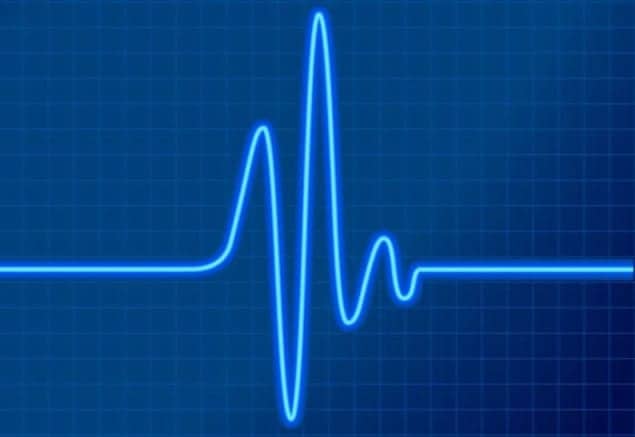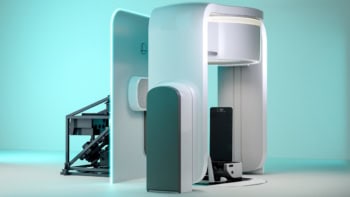
Physicists in China say they have made a breakthrough in thermoacoustic imaging that could enable it to be used in hospitals within five years. The technique, which involves firing microwaves at tissue, had previously been considered too dangerous to use on humans, but the researchers have now employed what they say is a safer, nanosecond microwave source.
Thermoacoustic imaging was invented in the early 1980s. The idea is to expose tissue to a microwave pulse, which travels into the tissue until it is absorbed. Exactly how the pulse is absorbed depends on the type of tissue present. When the pulse is absorbed, it does not heat the tissue significantly because it is very short. The energy instead generates a moving deformation, which is an acoustic wave. The profile of this acoustic wave is detected using an array of transducers, and these data are used to create an image of the tissue through which the microwave pulse has passed.
The technique is considered attractive for certain patients, such as those at risk of breast cancer, because it has a higher contrast and is more penetrative than, for example, photoacoustic imaging. However, it has suffered from comparatively poor resolution, and the microwave doses employed hitherto have been considered unsafe for humans. For these reasons the technique has not yet been taken up by medicine.
Shorter, safer pulses boost resolution
Da Xing and colleagues at the South China Normal University in Guangzhou believe that thermoacoustic imaging could be a safe, high-resolution technique with the use of nanosecond microwave pulses. Theory suggests that the shorter the microwave pulse, the shorter the wavelength of the generated acoustic wave, and the higher the resolution. In addition, a shorter pulse reduces the exposure of tissue to harmful microwaves. The researchers’ breakthrough is to have developed such a nanosecond microwave source and apply it to thermoacoustics.
It’s great to see new applications of microwave technology finding their way to the biomedical-research community
Russell Witte, University of Arizona
“One obstacle in this area has been the difficulty getting access to cutting-edge pulsed-microwave technology, which has either been very expensive or highly classified in the US for many years,” says biomedical engineer Russell Witte at the University of Arizona at Tucson, US, who was not involved with the work. “So, it’s great to see new applications of microwave technology finding their way to the biomedical-research community.”
Xing and colleagues’ microwave source is based around a Tesla coil – a type of electrical transformer that can generate a high-voltage discharge. The researchers collect this discharge at a coiled antenna, which generates a microwave pulse of just a few nanoseconds’ duration. The subsequent microwave dosage, the researchers claim, is some 100 times lower than the safety standards set by the American National Standards Institute.
Tested on gelatin
The Chinese group tested the microwave source on samples consisting of copper wires, and rings made of gelatin. They found that they could image the samples at a resolution of 100 μm, which is five times better than previous thermoacoustic imaging devices. “Our device opens up exciting opportunities for non-invasive, high-resolution clinical thermoacoustic imaging,” says Xing.
Group member Cunguang Lou adds that, with suitable transducers for detection, the source could allow thermoacoustic imaging to be performed in real time, which has not been done before. “We can predict that thermoacoustic imaging will be used to image actual patients within five years,” he says.
“The scarcity of short-pulsed microwave sources has been a major bottleneck in the development of microwave-induced thermoacoustic tomography, which has the potential to image human bodies without using harmful X-rays or other ionizing radiation,” says biomedical engineer Lihong Wang at Washington University in St Louis, Missouri. He adds: “The development of this new microwave source will propel the growth of microwave-induced thermoacoustic tomography, especially toward microscopic imaging.”
The research is published in Physical Review Letters.



